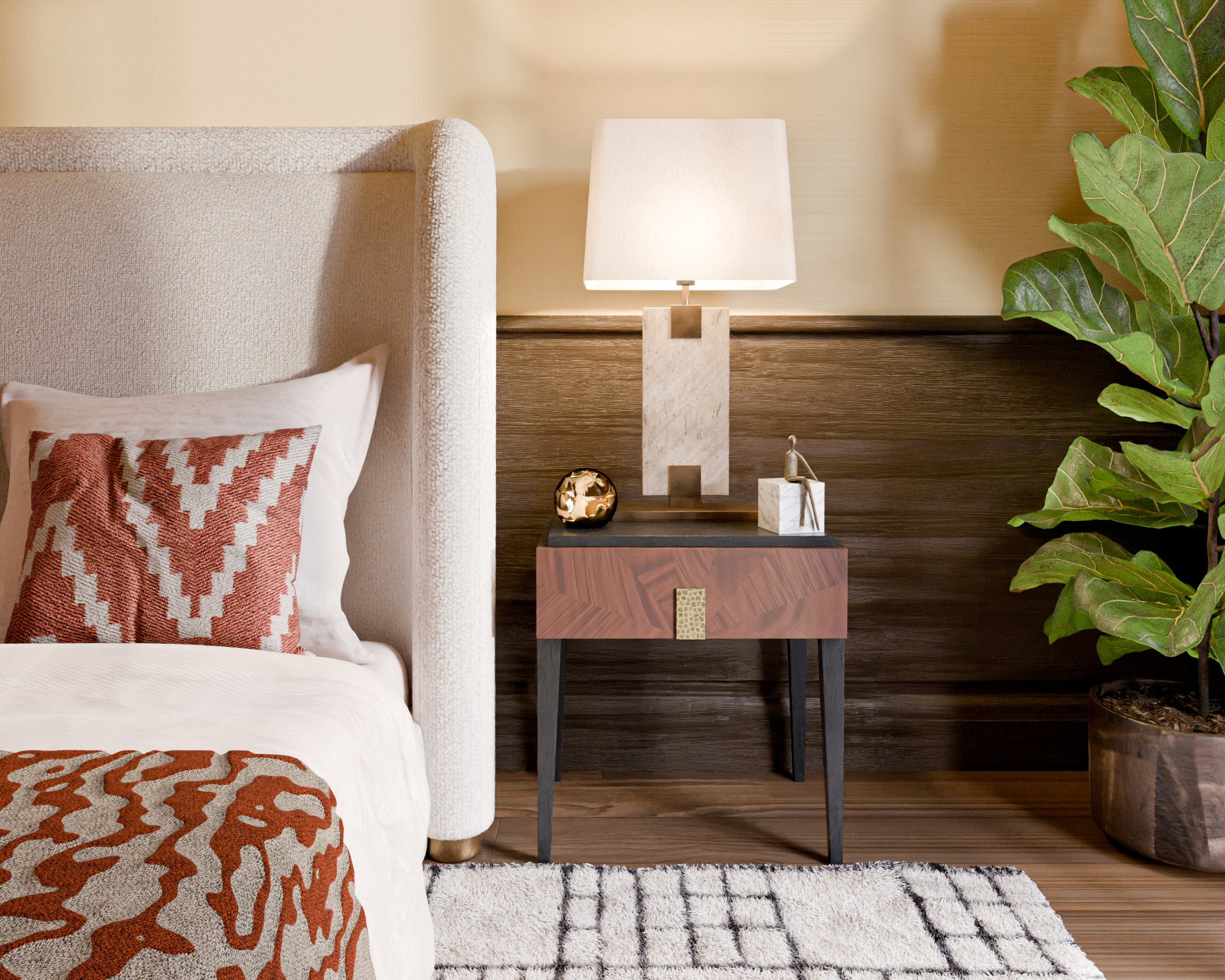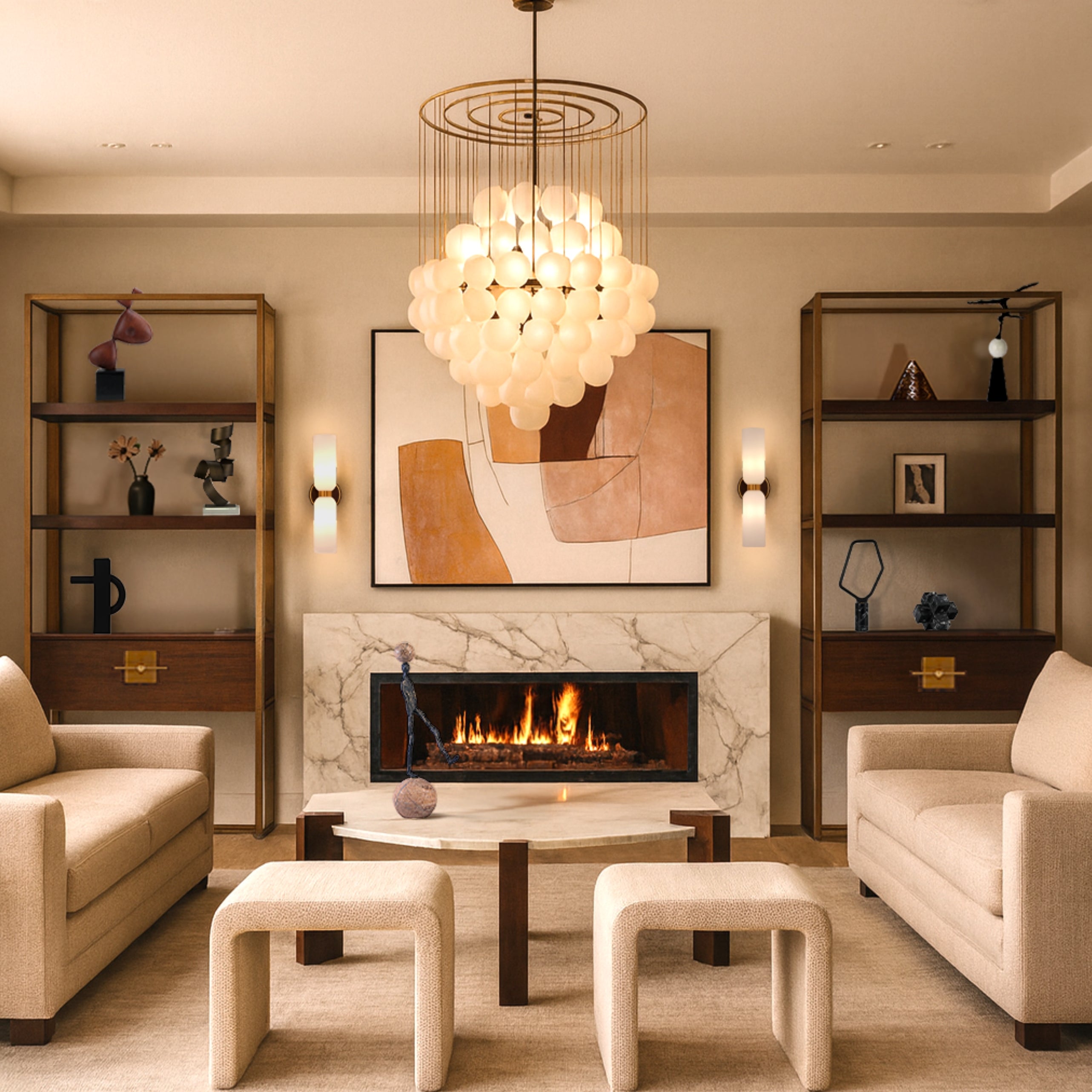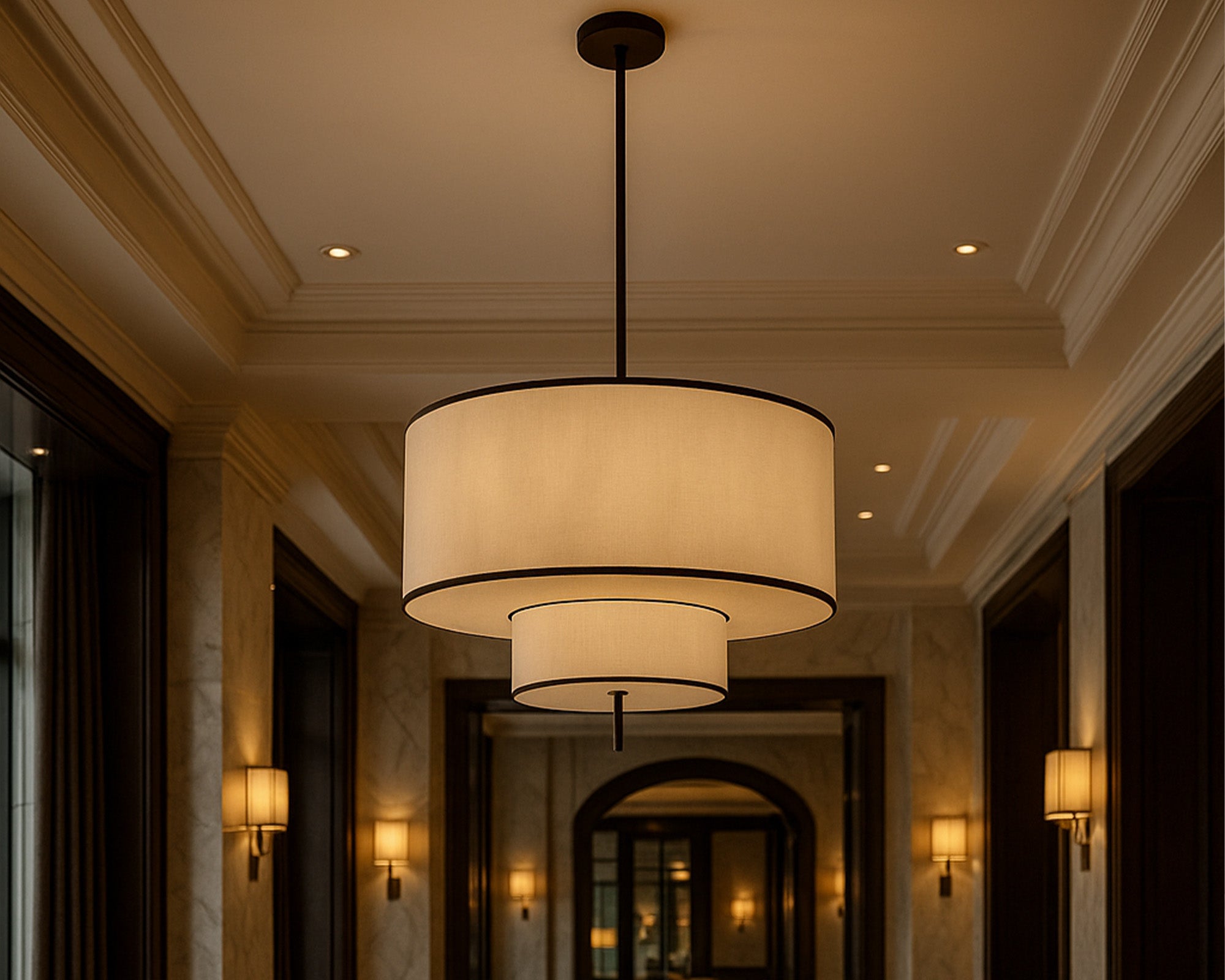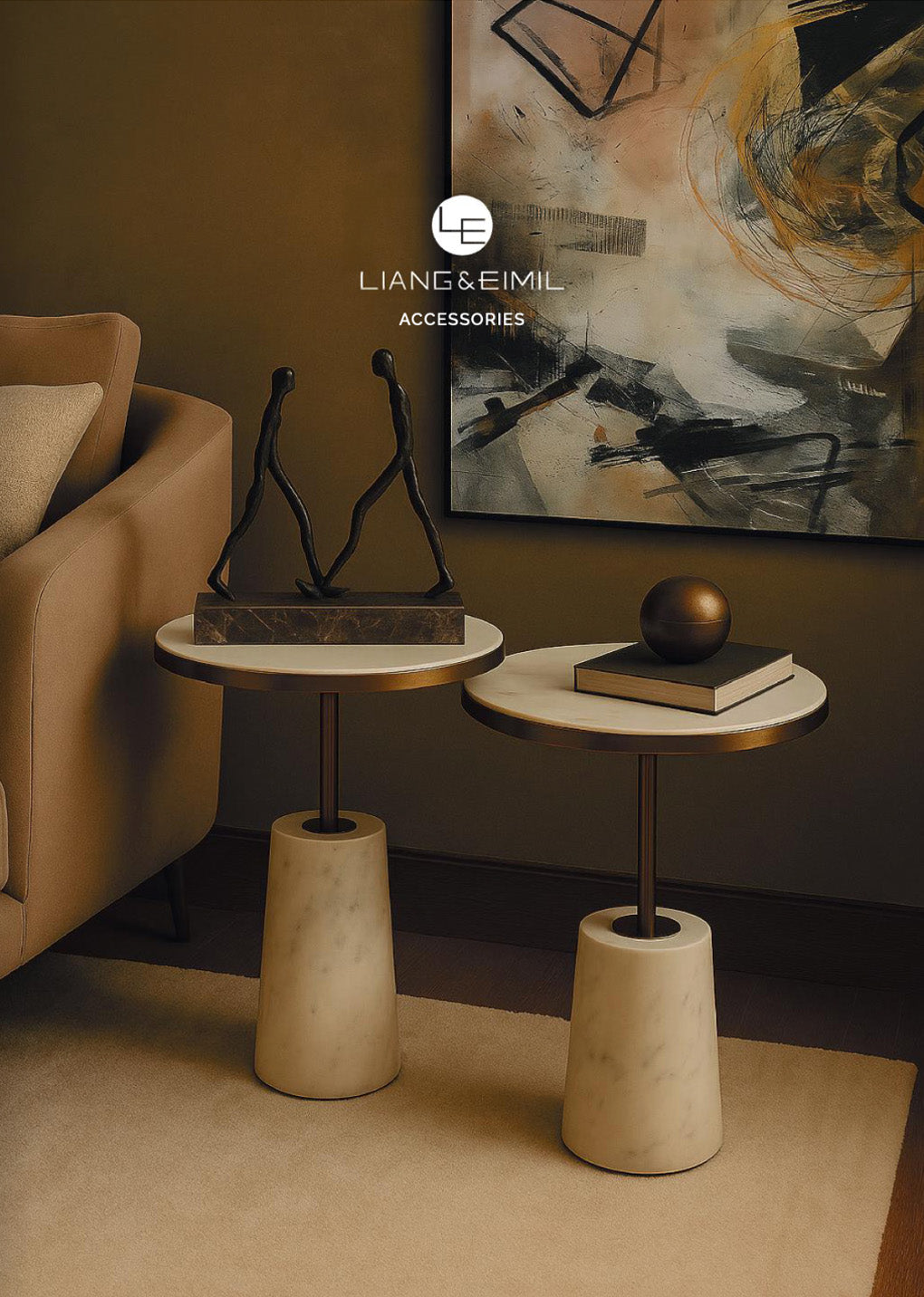Furniture Care Guidelines
Unveil the secrets to nurturing your favourite pieces.

Upholstery
Unveil the secrets to nurturing your upholstery treasures, whether they’re as smooth as velvet, as textured as bouclé, or as cosy as chenille. Delve into the art of maintaining these luxurious fabrics and elevate your interior game to a whole new level of sophistication and style.
Upholstery Care
Textural and timeless, bouclé upholstery adds depth and softness to any interior. Due to its looped yarns, it requires gentle, consistent care.
- Regular Maintenance: Vacuum weekly with a soft brush attachment to remove dust and prevent build-up within the loops. Avoid pulling any loose threads – carefully snip them instead.
- Spill Management: Immediately blot spills using a clean, dry cloth. Do not rub, as this may distort the texture.
- Professional Cleaning: For deep cleaning, use a specialist upholstery cleaner or consult a professional. Avoid harsh chemicals or water saturation.
Chenille fabrics like Lander Shade are known for their soft, tactile quality and subtle sheen. They're durable yet require thoughtful care.
- Routine Care: Gently vacuum with an upholstery attachment to lift surface dust and preserve the nap.
- Stain Treatment: Blot any stains promptly with a soft cloth. A mild soap and warm water solution can be used for spot cleaning, but always test on an inconspicuous area first.
- Avoid Abrasion: Keep chenille away from sharp objects or rough clothing to prevent pilling or thread pulls.
This woven fabric combines a contemporary look with practicality, offering a subtly variegated texture that disguises minor marks.
- Ongoing Cleaning: Lightly vacuum or brush to remove surface debris and maintain the weave.
- Spills: Absorb any spills promptly using a dry cloth. For light stains, a gentle upholstery cleaner may be used following a patch test.
- Care Tip: Rotate cushions and avoid placing under direct sunlight to ensure even wear and prevent fading over time.
A classic symbol of luxury, velvet’s plush pile and lustrous finish require delicate handling to retain its elegance.
- Regular Upkeep: Use a soft-bristled brush or vacuum with a velvet-safe nozzle weekly to lift the pile and remove dust.
- Spill Response: Blot gently—never rub. For water-based stains, use a lightly damp cloth and move in the direction of the pile.
- Pile Restoration: Use a velvet brush or steamer to revive flattened areas. Always brush in the direction of the nap to maintain consistency.

Wood
Ever found yourself staring at your cherished wood pieces, pondering how to keep them looking as sharp as the day you brought them home? Dive into the art of wood care and unveil the secrets to nurturing your oak, wedge, ash, and cream treasures with finesse and flair!
Wood Care
A striking, contemporary finish that demands gentle maintenance to preserve its sleek matte look.
- Daily Care: Wipe with a soft, dry microfiber cloth to remove dust and fingerprints.
- Spills: Use a lightly damp cloth for spot cleaning, then dry immediately. Avoid abrasive cloths or harsh chemicals that may dull the finish.
- Finish Protection: Use felt pads under accessories and coasters to prevent surface marks or micro-scratches.
Elegant and tonal, this veneer features a subtle grain with a modern grey wash.
- Cleaning: Dust regularly with a dry cloth. For occasional cleaning, use a slightly damp cloth and dry with care.
- Avoid Moisture: Do not use excess water as veneer can swell if saturated. Always clean up spills promptly.
- Sunlight: Protect from prolonged direct sunlight, which may cause uneven fading over time.
A deeply toned finish with tactile brushing for added texture and warmth.
- General Care: Dust frequently using a soft cloth to preserve its textured grain.
- Cleaning Advice: Use a clean, lightly damp cloth to remove smudges, always wiping in the direction of the grain.
- Preservation: Avoid placing hot items directly on the surface. Use placemats or trivets as a protective barrier.
Timeless and refined, natural walnut showcases rich grain patterns and a smooth, satin finish.
- Routine Maintenance: Dust with a lint-free cloth. Use a damp cloth for light cleaning and always dry with a clean towel.
- Enhancement: Occasionally treat with a wood-safe conditioner to maintain its lustre and prevent drying.
- Tip: Keep away from heat sources and direct sunlight to avoid warping or discolouration.
Light and airy, blonde oak brings a contemporary yet organic feel to interiors.
- Cleaning: Wipe gently with a soft, slightly damp cloth. Avoid ammonia-based cleaners that may damage the finish.
- Protective Measures: Use coasters and avoid dragging objects across the surface.
- Care Tip: Maintain consistent humidity levels to minimise the risk of wood movement.

Marble
Step into the elegant world of marble mastery and uncover the secrets to pampering your prized furniture like royalty. Your marble marvels deserve nothing but the finest care, and we’re here to unveil the artistry behind maintaining their timeless allure.
Marble Care
Light and luminous, White Marble brings elegance to any setting but is naturally more porous and prone to etching.
- Cleaning: Wipe regularly with a soft, damp cloth and pH-neutral stone cleaner. Avoid acidic or abrasive products.
- Spill Protocol: Clean up spills immediately—especially from acidic substances like wine, citrus, coffee, or vinegar to prevent etching.
- Protection Tip: Always use coasters and mats under glassware and serveware. Consider a stone sealant for added surface protection.
Dramatic and polished, this deep black marble with striking white veining is bold and sophisticated.
- Daily Care: Dust with a dry microfiber cloth. Clean with a damp cloth and a marble-safe cleaner as needed.
- Avoid Scratches: Do not drag items across the surface. Use felt pads beneath decorative pieces.
- Polish Preservation: Avoid wax or polish products that may leave a residue or change the natural sheen.
A naturally porous stone with earthy tones and a soft, tactile surface.
- Care Instructions: Clean with a damp cloth and avoid excessive water or harsh cleaners.
- Porosity Note: Seal regularly to prevent staining from spills. Wipe up liquids immediately.
- Textural Tip: Dust gently and avoid pressing into the natural pits or grooves with sharp tools or brushes.
Rich and smoky in tone, Emperador marble adds a refined depth to interiors with its intricate veining.
- Routine Maintenance: Wipe gently with a damp cloth and dry with a soft towel. Use pH-neutral products only.
- Sealing: This marble may benefit from occasional resealing to reduce surface absorption—consult a stone care professional.
- Avoid Direct Contact: Use trays, coasters, or decorative bowls to protect high-contact areas.
- Always use coasters, mats, and placemats.
- Never use bleach, vinegar, lemon, or ammonia-based cleaners.
- Clean up spills immediately, especially oils, citrus, wine, or acidic foods.
- Consider a professional sealant treatment every 6–12 months to protect the surface.
- For best results, consult a stone care professional for deep cleaning or restoration needs.

Glass
Step into the world of glass furniture care, where every gleam reflects not just elegance but also the meticulous attention it deserves. From preserving pristine clarity to warding off pesky smudges, embark on a journey of discovery to unveil the secrets of nurturing your glass treasures.
Glass Care
Dust Regularly: Use a soft, lint-free cloth or microfiber duster to remove surface dust without scratching.
Fingerprints & Marks: For smudges or fingerprints, use a clean, slightly damp microfiber cloth followed by a dry cloth to polish.
Routine Cleaning: Apply a streak-free, ammonia-free glass cleaner to a cloth (not directly to the surface), then wipe gently. Avoid spraying cleaner directly on or around wooden, metal, or stone components.
- Act Quickly: Clean spills immediately to avoid potential staining or damage to supporting materials (e.g., wood or brass trim).
- Avoid Abrasives: Never use scouring pads, powder cleaners, or rough cloths, as they can scratch or dull the finish.
- Hard Water Marks: For stubborn limescale, use a mild solution of white vinegar and warm water, applied with a cloth and followed by a clean water wipe. Avoid this method near stone or metal finishes.
Clear Glass
- Ideal for bright, open looks but may show smudges more easily.
- Polish with a dry microfiber cloth regularly for a pristine finish.
- Use coasters and placemats to avoid water rings or surface scratching.
Smoked or Tinted Glass
- Tinted glass is often more forgiving with marks but can still scratch.
- Use only non-abrasive cloths and avoid coloured cleaning products that may stain the edges or tint.
Fluted or Ribbed Glass
- Dust carefully with a soft brush or microfiber cloth to avoid residue build-up between ridges.
- Clean along the grooves with a damp cloth or soft brush (like a natural bristle toothbrush) for hard-to-reach areas.
- Avoid excess water that may seep into detailing or joinery.
Mirrored or Antique Glass
- Wipe with a barely damp microfiber cloth and avoid letting moisture reach the backing, as this may cause oxidation or de-silvering.
- Never use vinegar or acid-based cleaners on antique or foxed finishes.
- Dry completely with a lint-free cloth after cleaning to preserve the reflective quality.
- Avoid Direct Impact: Even toughened glass can crack or shatter if struck with force. Avoid placing heavy or sharp items directly on the surface.
- Use Soft Pads: Place soft felt or rubber pads under decorative objects to prevent micro-scratches.
- No Dragging: Lift objects rather than dragging them to avoid etching the surface.
- Temperature Awareness: Avoid placing extremely hot or cold items directly on glass without protection — use trivets or coasters.
- Children & Pets: If glass is used on low-level tables or shelving, consider placement away from high-traffic zones to prevent accidents.
- Monthly Deep Clean: Schedule a more thorough clean with a professional-grade glass cleaner, checking edges, frames, and structural components.
- Check for Loose Fittings: Periodically inspect metal or wooden frames supporting the glass, tightening screws and checking joints if needed.
- Sunlight Exposure: Some tinted or treated glass may fade or discolour under prolonged direct sunlight — consider blinds or UV-filtering window film where needed.

Metal
Unlock the secrets to preserving the gleam and durability of your metal furniture as we delve into the essential techniques for optimal care. From shielding against the elements to restoring that showroom shine, embark on a journey to ensure your prized pieces stand the test of time.
Metal Care
- Dusting: Wipe regularly with a clean, dry microfiber cloth to remove dust and maintain sheen.
- Cleaning: For light marks or fingerprints, use a damp cloth followed by a dry one. Avoid saturating the metal or letting water sit on the surface.
- Product Choice: Always use pH-neutral, non-abrasive cleaners. Never use bleach, ammonia, or harsh chemicals as they may damage or discolour the finish.
Brushed Brass / Brushed Bronze
Elegant with a warm, muted shine and directional grain.
- Care: Wipe in the direction of the grain using a soft, dry cloth. Avoid abrasive motions or harsh products that may scratch or strip the finish.
- Protection: Use gloves when handling if possible, as natural oils can tarnish the surface over time.
- Polishing: Avoid commercial brass polishes unless specifically marked “safe for lacquered finishes.”
Polished Stainless Steel / Chrome
Highly reflective with a smooth, modern finish.
- Care: Polish gently with a microfiber cloth to remove smudges. For stubborn marks, use a diluted soap solution and dry thoroughly.
- Avoid Scratches: Do not use paper towels, as they can cause micro-abrasions. Always opt for lint-free cloths.
- Water Spots: Dry promptly after cleaning to prevent water marks or streaks.
Powder-Coated Metal (Black, White, Grey, etc.)
Durable and modern, often used on frames or structural pieces.
- Cleaning: Use a mild detergent diluted in warm water with a soft cloth or sponge. Rinse and dry well.
- Avoid: Do not use abrasive pads or polishers, as they can wear down the protective coating.
- Tip: Check regularly for chips or scratches and touch up as needed to prevent rusting.
Antique or Patinated Metal
Unique in character, these surfaces are intentionally aged or treated for texture and depth.
- Dusting: Gently dust with a soft cloth. Avoid any cleaning solutions unless confirmed safe for the finish.
- Avoid: Never attempt to polish or buff antique metals — this may remove the intended patina.
- Protection: Keep dry and avoid contact with acidic or alcohol-based liquids.
✅ Do
- Use coasters, placemats, and felt pads under décor and serveware.
- Test cleaners on a small, hidden area before full application.
- Clean regularly to avoid build-up of grime or oxidation.
🚫 Don’t
- Don’t use scouring pads, steel wool, or abrasive polishes.
- Don’t leave moisture or spills to sit — always wipe dry immediately.
- Don’t place metal items in direct contact with high humidity sources like plant pots or wet trays.
- Avoid Humidity: Keep metal furnishings in well-ventilated, dry environments. Excessive moisture can lead to corrosion or tarnishing over time.
- Sunlight Exposure: Limit direct sun on dark or blackened metals to prevent potential discolouration.
- Handling: Use care when moving metal pieces to avoid denting, warping, or joint loosening.

Ceramic
Liang & Eimil ceramics are handcrafted with exceptional artistry, designed to elevate interiors with their sculptural elegance and timeless texture. To preserve their refined finish and ensure long-lasting beauty, please follow these detailed care instructions.
Ceramic Care
- Handle all ceramic items with care, especially those with sculptural or irregular silhouettes.
- Place on stable surfaces away from high-traffic areas or shelving edges to minimise the risk of accidental knocks or tipping.
- When moving ceramic pieces, lift them from their base—never from protruding elements such as handles or rims.
Regular care will maintain the lustre and integrity of your ceramic pieces. Here's how to clean them safely:
- Dusting: Use a soft, dry microfibre cloth or feather duster to gently remove surface dust. This prevents buildup that may dull the surface.
- General Cleaning: For deeper cleaning, wipe with a slightly dampened, soft cloth using clean lukewarm water. If needed, add a drop of mild, pH-neutral dish soap.
- Stain Removal: For stubborn marks, use a soft sponge dampened with warm water and a mild soap. Avoid abrasive pads, scouring powders, or acid-based cleaners, which may scratch or erode the glaze.
- Matte Finishes: For unglazed or matte ceramics, avoid excessive moisture and clean only with a dry or lightly damp cloth, as water can darken or discolour the surface temporarily.
While many of our ceramic vases are watertight, we strongly recommend avoiding prolonged exposure to standing water:
Do not leave water in ceramic vases for extended periods. Due to the natural porosity of ceramic, especially in handmade or artisanal pieces, water can gradually seep through, leading to condensation, surface damage, or leakage.
For fresh flower arrangements:
- Use a waterproof liner or insert a smaller glass vessel inside the ceramic vase.
- Empty and dry the vase completely after each use.
- Always dry the interior thoroughly to prevent water absorption.
Keep ceramic items away from direct sunlight, damp areas, or near radiators and fireplaces, as temperature fluctuations may cause expansion, contraction, or fine cracking.
Avoid outdoor use unless specifically stated as outdoor-safe.











